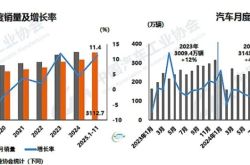Cloud Colossus Clash: Amazon AWS Confronts Microsoft, Google, and Alibaba Cloud
![]() 04/21 2025
04/21 2025
![]() 894
894
Preface:
The global cloud computing market is undergoing a tumultuous "power shift." Amazon AWS, once the dominant force, now finds itself besieged by Microsoft Azure, Google Cloud, and Alibaba Cloud.
From market share skirmishes to technological ecosystem battles, from financial data discrepancies to the race for global dominance, this colossal clash has reached its climax.
Author | Fang Wensan
Image Source | Network
From 'One Dominant and Multiple Strongholds' to 'Quadruple Rivalry'
According to Synergy Research data, the global public cloud market is poised to surpass $600 billion by 2024. AWS stands firmly at the helm with a 32% share, generating annual revenues of $120 billion, a 20% year-on-year increase.
Microsoft Azure trails closely with a 23% share, boasting an average annual growth rate of 30%. Google Cloud, leveraging breakthroughs in AI technology, has increased its market share to 12%. Alibaba Cloud, with a 6% share, maintains a robust fourth position globally, holding over 50% of the Asia-Pacific market.
While AWS commands over 40% of the North American market, Azure leads in Europe with a 25% share due to its localized compliance advantages, slightly edging out AWS's 23%.
Alibaba Cloud is accelerating its Southeast Asian presence, with 2024 revenues in the region surging by 35%. The company is adding data centers in Indonesia and Thailand and expanding into the Middle East through a partnership with Saudi Arabia's Agilan Brothers Holding Group.
Differentiated Competitive Paths
AWS: Leveraging its comprehensive suite of over 200 cloud services, AWS fortifies its position in the traditional enterprise market while betting on edge computing, quantum computing, and generative AI. In 2024, it acquired HIPAA-compliant healthcare cloud service provider Healthcare.com to deepen its vertical industry penetration. However, its slower open-source ecosystem development compared to Google Cloud and Azure has led to the loss of some technical customers.
Azure: Microsoft seamlessly integrates Office 365, Teams, and Azure, creating a closed-loop ecosystem of 'Office + Cloud + AI.' This integration offers significant advantages in finance and manufacturing, with 80% of the top 50 US banks and giants like BMW and Siemens utilizing Azure. The 2024 launch of the 'Azure OpenAI Service' in partnership with OpenAI gave Azure a first-mover advantage in commercializing generative AI, making it the preferred platform for enterprise AI deployments. In Q4 2024, Azure and related cloud service revenues surged by 29% year-on-year, with gross margins exceeding 70%.
Google Cloud: Focusing on AI and data analytics, Google Cloud introduced the Vertex AI platform to lower the entry barriers for enterprise development, creating a data closed loop anchored by traffic entry points like YouTube and Google Maps. Its 'Sustainable Cloud' strategy commits to matching 100% carbon-free energy by 2030, attracting ESG-oriented customers like Allianz and Novartis. In 2024, sustainable-related businesses grew by 40%.
Despite Q4 2024 revenues of $11.955 billion, a 30% year-on-year increase, they fell short of market expectations, causing a 7% after-hours stock price drop.
Alibaba Cloud: Drawing on e-commerce ecosystems like Taobao and Alipay, Alibaba Cloud offers mature solutions in retail and logistics, serving over 80% of China's top 100 e-commerce enterprises. In the international market, it launched its first Middle East data center in 2024 (in collaboration with Saudi Arabia) and added new nodes in Indonesia and Thailand, aiming to replicate its 'local ecosystem + regional compliance' advantage. In Q4 2024, the cloud intelligence group's revenues reached 31.742 billion yuan, a 13% year-on-year increase, with AI-related product revenues achieving triple-digit growth for six consecutive quarters.
Analyzing Growth Momentum Differentiation Through Financial Statements
AWS: Amazon's Q4 2024 financial report revealed AWS revenues of $28.786 billion, a 19% year-on-year increase, significantly lower than the 28% growth rate in Q4 2020. Gross margins declined from 35.3% in Q4 2022 to 33.4%, primarily due to customers cutting IT budgets and intensifying price wars (AWS implemented three price reductions in 2024). Nonetheless, AWS contributed 63% of Amazon's operating profit ($6.7 billion), reaffirming its status as the group's 'cash cow.'
Azure: Microsoft's Intelligent Cloud business revenues for fiscal year 2024 totaled $86.8 billion, with Azure growth reaching 27%, far exceeding the industry average. In Q4 2024, Azure and related cloud service revenues soared by 29% year-on-year, with gross margins exceeding 70%, propelling Microsoft's market value beyond $2 trillion.
Google Cloud: Q4 2024 revenues stood at $11.955 billion, a 30% year-on-year increase, maintaining growth rates above 20% for 12 consecutive quarters. However, operating losses reached $730 million (compared to $1.04 billion in Q4 2022), primarily due to high R&D investments (AI-related R&D expenses increased by 35% in 2024).
Alibaba Cloud: Alibaba's cloud computing revenues for fiscal year 2024 amounted to 101.2 billion yuan, a modest 2% year-on-year increase. However, Q4 2024 revenues grew by 4% year-on-year, ending five consecutive quarters of declining growth rates. The proportion of international business revenues rose to 20%, with a growth rate of 28%, emerging as the only positive growth segment.
Market Challenges and Breakthrough Points
AWS must balance scale expansion with profit preservation, accelerate the rollout of AI products (catching up with Azure OpenAI), and address compliance pressures from the EU's 'Digital Tax' and the US 'Cloud Act,' averting customer loss due to 'data sovereignty' concerns.
Microsoft relies heavily on the Windows-Linux dual ecosystem synergy and must be vigilant against open-source community resistance towards Azure (e.g., Redis Labs switching to AWS) and address multi-brand integration challenges (e.g., enhancing synergy between LinkedIn and Azure).
Google Cloud boasts significant technological advantages but lags behind AWS and Microsoft in ToB sales capabilities. It must transition from 'selling technology' to 'selling industry solutions' to narrow the gap with second-tier players.
Alibaba Cloud faces challenges such as low brand recognition and insufficient localized teams in European and American markets. It must avoid the 'low-price competition' trap and instead leverage China's supply chain and e-commerce expertise to deliver differentiated value.
Conclusion: The Cloud War Continues
Cloud computing has shifted from 'land-grabbing in incremental markets' to 'intensive cultivation in existing markets.' AWS's fortress remains formidable, but its rivals are incessantly chipping away at its territory through ecosystem binding, technological verticalization, and regional deep cultivation.
The crux of future competition lies in who can pioneer large-scale commercial scenarios in AI-cloud integration and who can strike the perfect balance between data compliance and globalization. This colossal clash is far from reaching its conclusion.
Content Data Source: Jiucai Finance APP; AWS, Microsoft, Google, Alibaba Financial Reports; Synergy Research, Gartner Industry Reports





